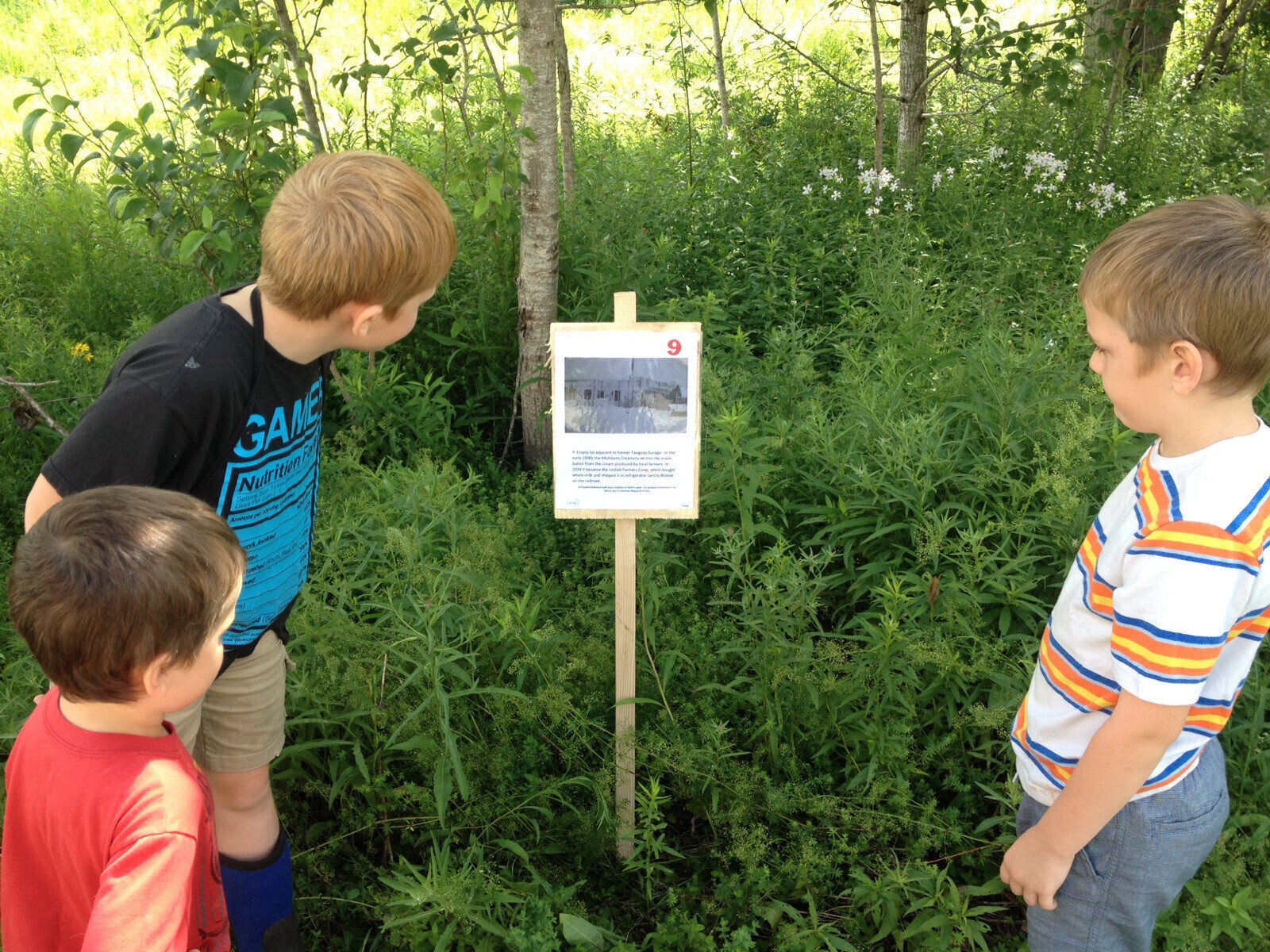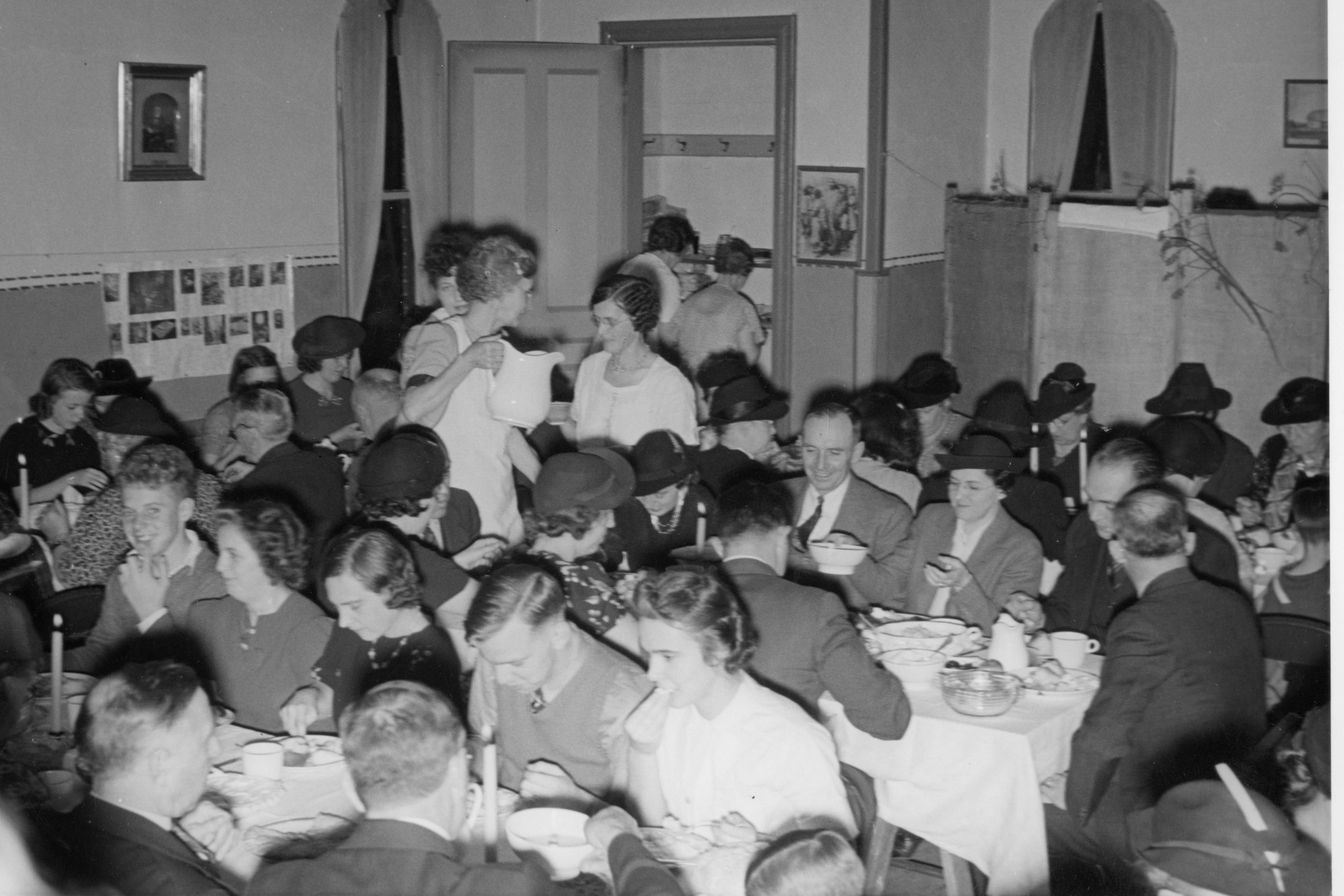Embracing Change, Preserving Local History

Our past endures because living people in the present choose to preserve it. While the social isolation of the COVID-19pandemic threatened the viability of local historical organizations and the work they do to build community connections, it also created opportunities for creative responses.
Last year, the Norwich Historical Society led a community-wide art collaboration called The Circles Project. Over 175 Norwich residents contributed canvas circles they painted to reflect what brought them hope during the pandemic. The resulting piece is now installed at a local general store, Dan & Whit's.
The Quest: Peacham Pandemics of the Past sent participants on a scavenger hunt-style mission to explore sites in Peacham Village with historical links to past outbreaks of diseases. The Quest's creators, the Peacham Library and the Peacham Historical Association, worked in concert to create this unique summertime activity that got people out of the house to learn about local history in a safe environment.
Capitalizing on Vermont's remarkable outdoor spaces was an essential component for local historical organizations attempting to stay connected with their community during the pandemic. Making this adjustment opened up opportunities for previously unconsidered "individualized' interactions with the past.
Many organizations hosted programs like walking tours, scavenger hunts, or hikes. Others created "outdoor exhibits" or trails with informational signage linked to that location. A few organizations, such as the Saint Albans Museum and the Lake Champlain Maritime Museum, literally packed up and relocated their exhibits outside.
Conversely, many organizations relied on technology. Virtual programs such as talks, presentations, and annual meetings moved to Zoom. Other groups grew the resources and content available on their websites with online exhibits, downloadable activities, virtual tours, videos, and pandemic-related collecting endeavors.
While it's difficult to determine which creative pandemic responses will become a permanent fixture of local historical societies' operations, it is safe to assume things will never be quite the same. Perhaps the most significant shift will be the persistence of virtual programming, once met with a lack of interest, but now a solution for reaching people where they are. Necessity has forced an embrace of online programing and expedited tech fluency.
Local historical societies also stand to benefit from the pandemic responses of larger organizations. With the extensive use of webinars, a library of recorded material covering a multitude of topics is now accessible to local historical societies, including new resources created by VHS. Additionally, expanded funding, particularly from the federal government, was made available and will likely remain open for the next few years, expanding the realm of possibilities for small organizations that operate on shoestring budgets and with few people.
Local history is both a window into and a reflection of ourselves. It is a living, breathing thing that grows and evolves with the interactions of students, researchers, and guardians.
Most Vermont towns have historical societies. If you are not already involved, check out their events, follow them on social media, become a member, volunteer your time, or encourage others to do their part! Don't have access to a local historical society? You can research the history of your home or neighborhood, work with your school to participate in Vermont History Day, preserve and share your personal family history, explore local history resources at your library, or talk with elders in your community to learn their perspectives.
This article was originally published in the Summer 2021 issue of our member magazine, History Connections. To get it, become a member of VHS.
